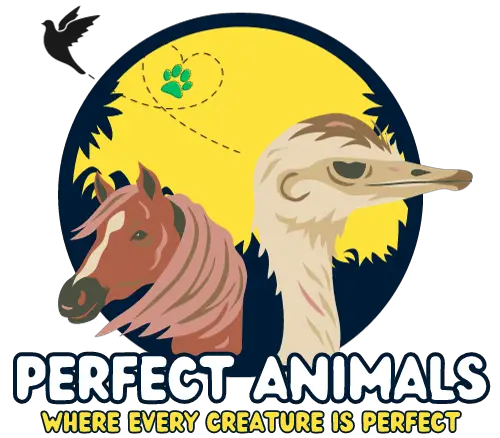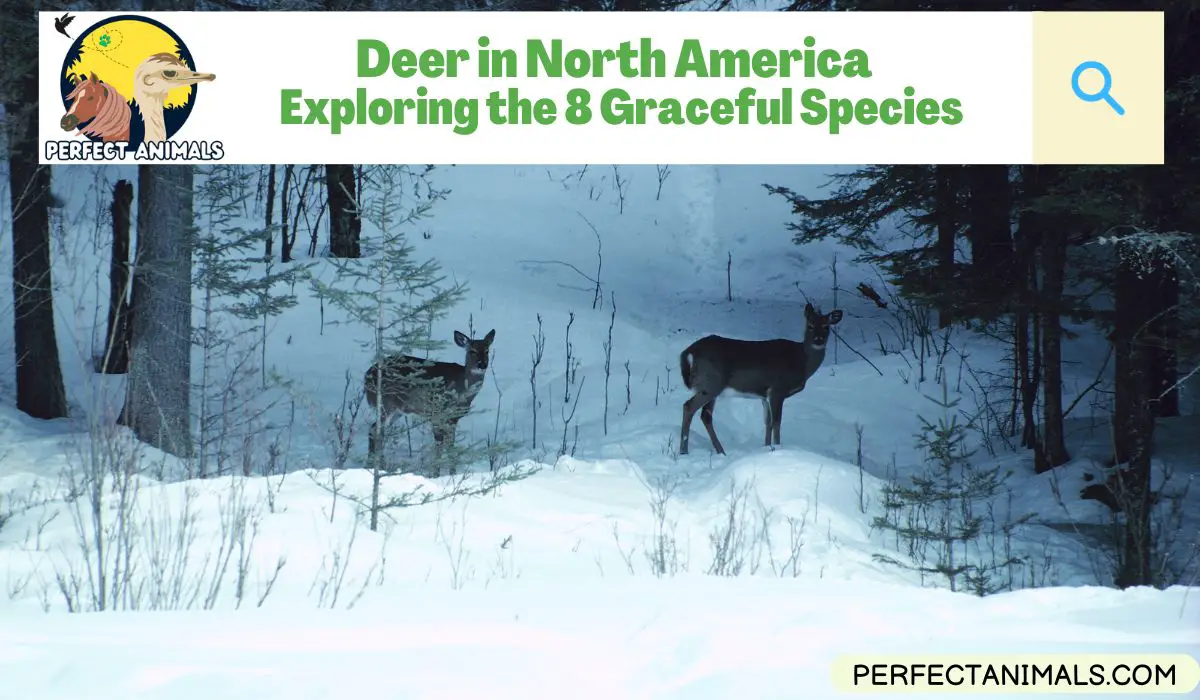Deer are one of the most widespread and recognizable wild mammals found throughout North America.
From the small Key deer of the Florida Keys to the magnificent moose of Canada and Alaska, the continent is home to a diverse range of deer species.
In this article, we’ll explore some of the most common types of deer found in North America, discussing their distinguishing features, habitats, and conservation status.
Ranging from the dainty Coues deer to the powerful elk, deer hold an important place in many North American ecosystems as well as in human culture.
Keep reading to learn more about these graceful creatures and the roles they play across North America.
Types of Deer in North America
White-Tailed Deer
The white-tailed deer is one of the most familiar deer species in North America.
As their name suggests, these deer are recognized by the white fur on the underside of their tails, which they raise as an alarm signal when fleeing predators.
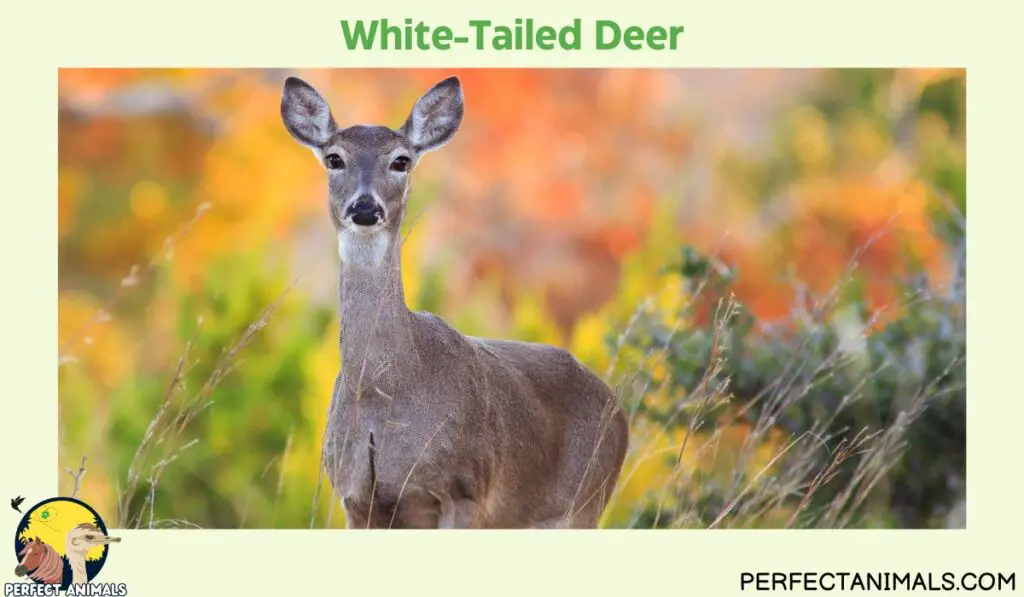
Ranging across most of North America east of the Rocky Mountains as well as parts of South America, white-tailed deer demonstrate impressive adaptability to various habitats.
They thrive in forests, meadows, agricultural areas, and even suburban neighborhoods.
White-tailed deer have reddish-brown coats in summer which fade to a grayish-brown in winter.
The males grow antlers each year that have a main beam with tines sprouting from it.
Their diet is highly varied, consisting of leaves, twigs, fruits, fungi, and more.
Agile and fast, white-tailed deer can run at speeds up to 30 mph and jump 10 feet high or 30 feet in distance to evade predators like bobcats and coyotes.
Overall, the white-tailed deer is a remarkably resilient deer that flourishes across an immense range.
You May Also Like – 18 Amazing Animals With Long Necks
Black-Tailed Deer
The black-tailed deer is a close relative of the mule deer found along the Pacific coast from Northern California to British Columbia.
A subspecies known as the Columbian black-tailed deer inhabits coastal forests and woodlands in this region.
Compared to mule deer, black-tailed deer tend to be smaller in size and darker in coat color.
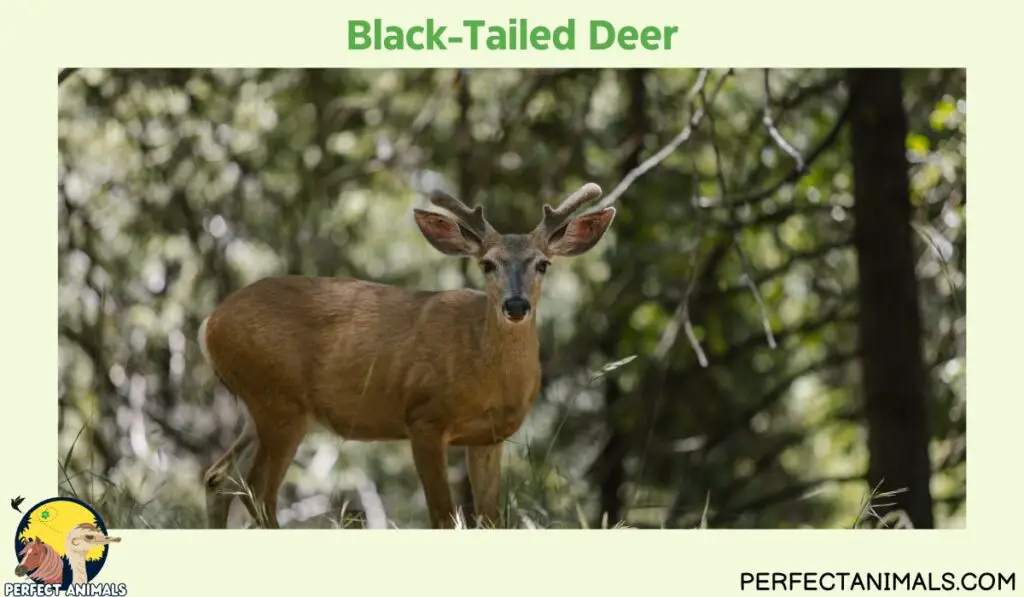
Perfectly adapted to dense, brushy habitats, black-tailed deer rely on their ability to hide and lay low rather than fleeing at top speed when threatened.
They are not as fast and agile as white-tailed deer.
As herbivores, black-tailed deer browse on vegetation like shoots, forbs, grasses, ferns, and brush.
They are susceptible to diseases including hair loss syndrome, hemorrhagic disease, chronic wasting disease, and fibromatosis.
The elusive black-tailed deer survives best in the shelter of the dark, tangled forests it calls home.
Mule Deer
The mule deer is an iconic deer species of western North America, named for its large ears resembling those of a mule.
Slightly larger than the white-tailed deer, mule deer stand around 3-7 feet tall at the shoulders.
They can be identified by their grayish-brown coat, white rump patch, black-tipped tail, and distinctive forked antlers.
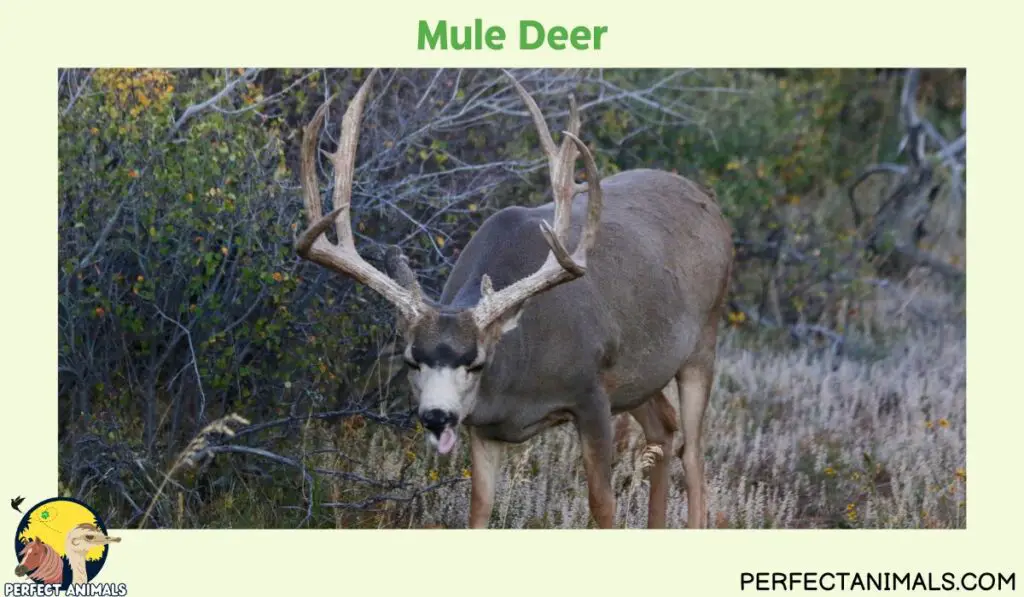
Perfectly adapted to the rocky, arid environments of the American West, mule deer thrive in habitats with diverse, early-growth vegetation and extensive shrubs.
As herbivores, they browse on a variety of plants like mesquite, jojoba, buck bush, and grasses. Mule deer occupy terrain from Mexico up through western Canada.
Surefooted and able to run up to 45 miles per hour, mule deer evade predators like mountain lions, wolves, and bears.
These iconic western deer hold an important place both ecologically and in the imaginations of all who are awed by their grace and beauty.
You May Also Like – Fascinating Foxes in Tennessee
Elk (Wapiti)
One of the largest deer species in North America, the elk, also known as wapiti, is an iconic ungulate of the mountains and forests of the American West.
Despite the name, elk are not the same as the Eurasian elk, which are moose.
Male elk stand up to 5 feet tall at the shoulder and can weigh over 700 pounds.
Their tan to dark brown coats and cream-colored rumps help camouflage them.
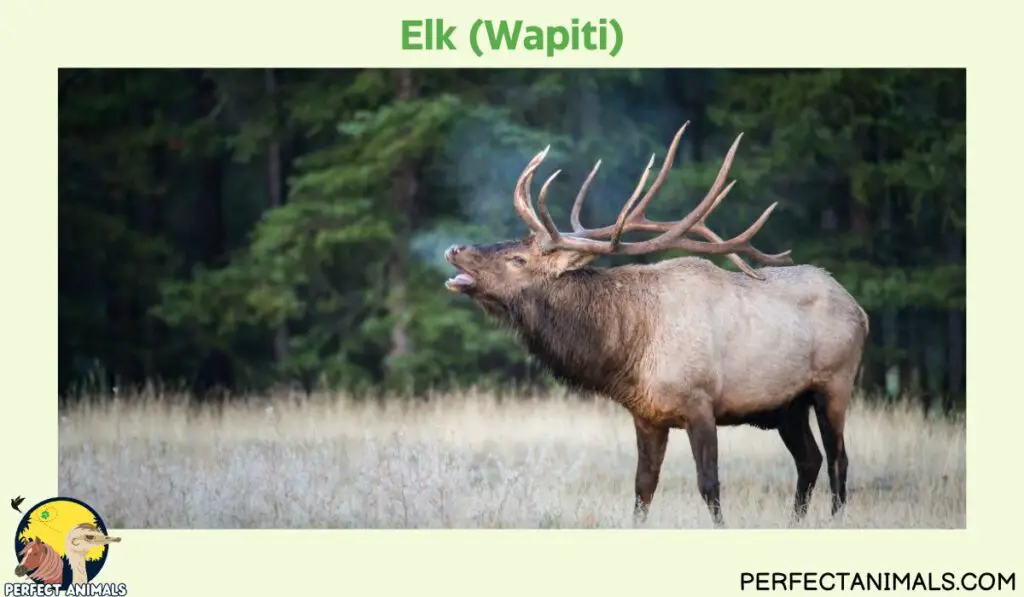
Several subspecies of elk roam North America, including the Rocky Mountain elk, Roosevelt’s elk, Tule elk, and Manitoban elk.
As herbivores, they graze on grasses, shrubs, and other vegetation.
Agile and fast, they can run up to 45 mph to escape predators like wolves, cougars, and bears.
Hunted almost to extinction in the late 1800s, elk have made a comeback thanks to conservation efforts.
Today they thrive in habitats from coast to coast, delighting viewers with their majestic antlers and haunting bugling calls.
Caribou (Reindeer)
The caribou, known as reindeer in Eurasia, is an iconic deer species of the northern regions of North America, Europe, and Siberia.
Despite some differences based on location, caribou and reindeer are in fact the same species, Rangifer tarandus.
They are specially adapted to survive frigid arctic and subarctic climates.
As herbivores, caribou feed on lichens, grasses, leaves, ferns, mushrooms, and more.
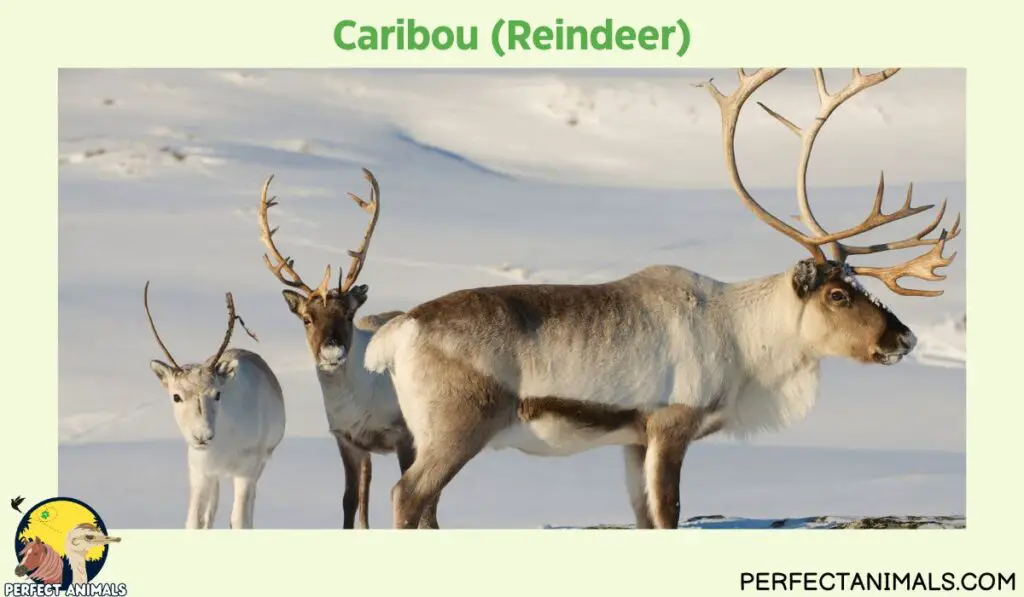
Their wide, crescent-shaped hooves help them traverse snowy and tundra terrain.
Some caribou migrate extraordinary distances up to 3,000 miles annually in search of food.
Caribou coats range from dark brown in summer to pale cream in winter.
Both male and female caribou grow antlers which are shed each year.
Once widespread across northern latitudes, caribou numbers have declined over the last century due to threats like climate change, habitat loss, and overhunting.
Conservation efforts now aim to protect these remarkable cold-adapted deer and their vast migrations across the Far North.
You May Also Like – Armadillos In Tennessee
Moose
The moose is the largest member of the deer family and one of the most massive land mammals in North America.
Standing up to 7 feet tall at the shoulders, moose are renowned for their enormous palmate antlers which can span 6 feet across.
Their long, dangling muzzles give them a unique appearance.
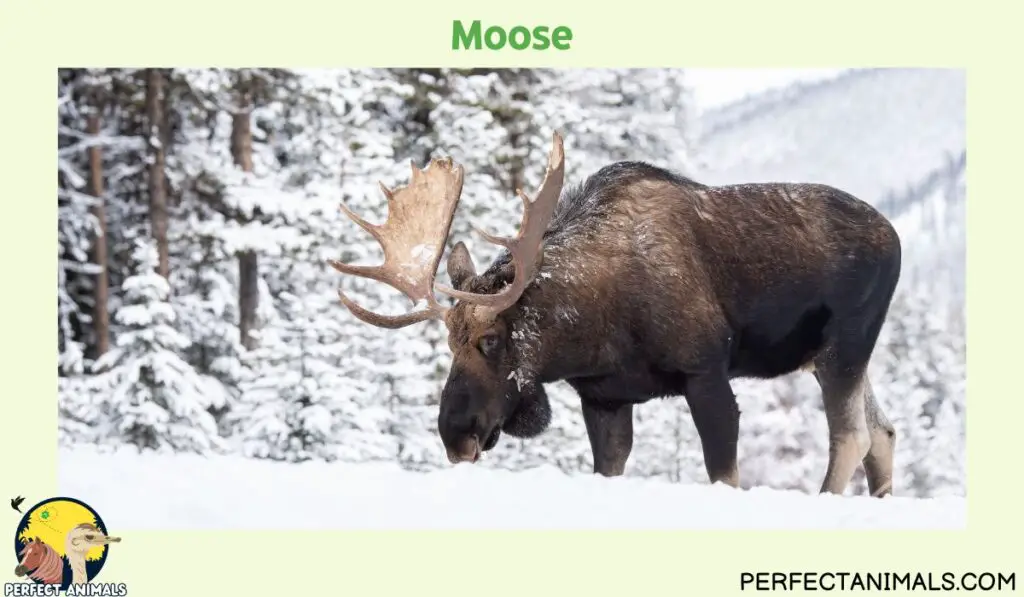
Moose inhabit boreal and mixed deciduous forests across Canada, the northern U.S., Europe, and Russia.
Their long legs allow them to easily traverse through deep snow.
As herbivores, moose feed on aquatic vegetation, leaves, twigs, and other plants. They are strong swimmers, able to submerge themselves to find food.
Prized by hunters for their meat, moose populations have declined in some regions due to habitat loss, climate change, and overhunting.
However, they remain plentiful enough in Alaska and Canada to support regulated harvest.
When encountered in the wild, moose should be given a respectful distance, as they can be aggressive if feeling threatened.
Coues Deer
The Coues deer is a small subspecies of white-tailed deer inhabiting the rugged terrain of the American Southwest and northern Mexico.
First identified and named after army physician Elliott Coues in the 1860s, Coues deer stand around 30 inches tall and weigh under 100 pounds.
Their oversized ears and tails give them a distinctive appearance.
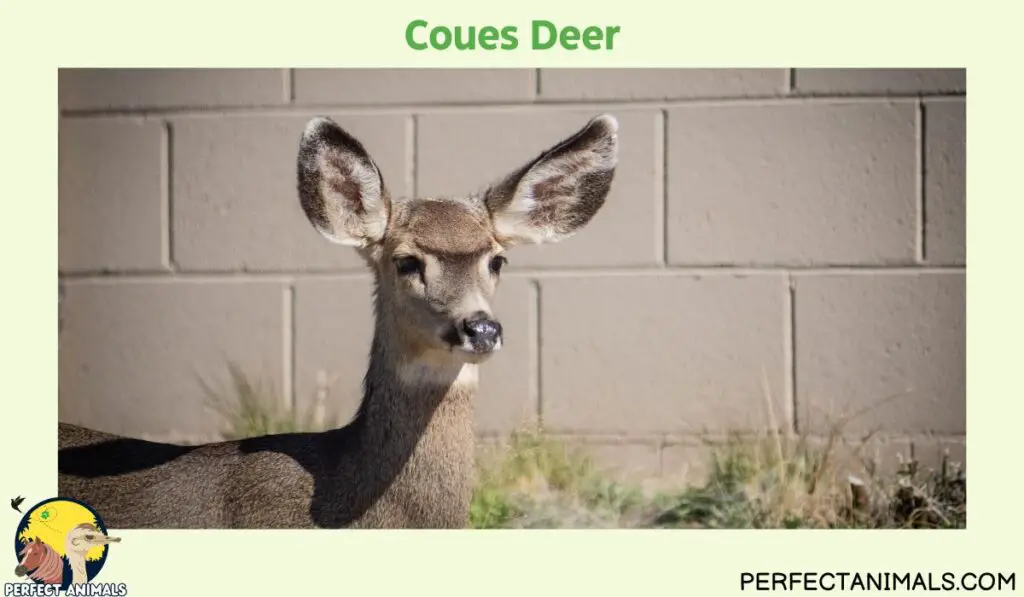
Making their home in high-elevation woodlands and scrublands, Coues deer thrive in areas with interspersed clearings and vegetation like pine, juniper, and oak.
They are exceptionally well-adapted to arid climates and rocky slopes between 6,000-8,000 feet in elevation.
Their petite size aids their agility and stealth in evading mountain lions, bobcats, and other predators.
Prized by hunters, Coues deer provide a special hunting challenge due to the remote landscape they inhabit.
Their meat is regarded as tender and flavorful. While overhunting has contributed to population declines in areas, regulated hunting ensures Coues deer remain sustainably managed.
You May Also Like – Are Foxes Nocturnal?
Key Deer
The Key deer is the smallest subspecies of white-tailed deer, native only to the Florida Keys.
Standing less than 3 feet tall and weighing under 100 pounds, they are pint-sized compared to other white-tailed deer.
Their habitat includes pine forests, hardwood hammocks, mangroves, and wetlands on the islands.
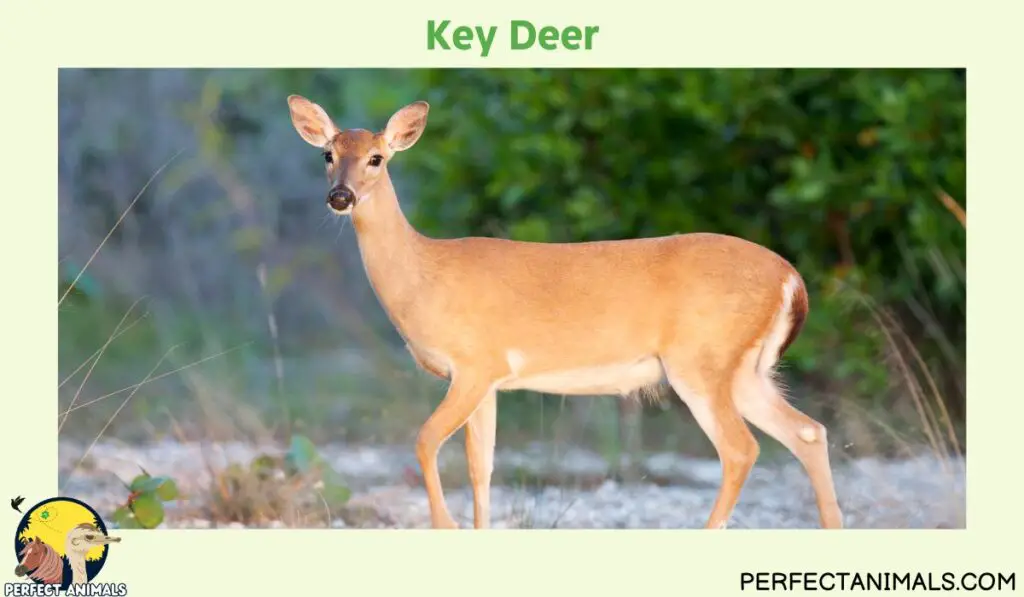
Key deer have a varied vegetarian diet, feeding on over 150 types of plants.
However, mangroves, silver palm fruits, and thatch palm berries provide vital sources of food.
Freshwater wetlands in pine rocklands also supply their only reliable drinking water sources, as Key deer cannot tolerate high salt concentrations.
Once hunted extensively and lost habitat, Key deer populations dwindled to around 50 animals in the 1940s.
Conservation efforts helped numbers recover to around 700-800 today on Big Pine Key and No Name Key.
However, deer mortality from highway collisions remains a threat.
Ongoing management and education seeks to protect the unique Key deer in its island home.
Final Thoughts
Deer are an integral part of ecosystems across North America. As we have seen, the continent is home to a remarkable diversity of deer species, from the dainty Key deer to the imposing moose.
While they inhabit a wide range of habitats from tundra to forest to desert, what unites them all is their grace, adaptability, and importance to native ecologies.
However, many deer populations now face threats from habitat loss, climate change, disease, and overhunting.
Careful management and conservation practices are needed to ensure their survival.
When given sufficient habitat and protection, deer can thrive alongside human communities. Their beauty and gentle nature will continue to inspire appreciation and awe.
With this overview of some of the major deer species in North America, we have only scratched the surface of the continent’s diverse deer populations.
Each species has its unique traits and behaviors molded by the environment it inhabits.
Deer remains an iconic symbol of the wilderness as well as reminders that humans share the landscape with a multitude of other living creatures.
If protected and respected, North America’s deer will continue to inhabit their native ranges for generations to come.
Resources – (for further reading)
Britannica – List of deer | Types, Species, Breeds
Safari Club – Cervids – The Deer Family (Deer, Elk, Moose and Caribou)
Whitetails Unlimited – North American White-tailed Deer Distribution & Subspecies

Sarah has years of experience working as a zookeeper. She has cared for a wide variety of animals, from primates to big cats. Her passion for animals extends beyond her profession, as she dedicates her free time to writing about wildlife and their conservation.
